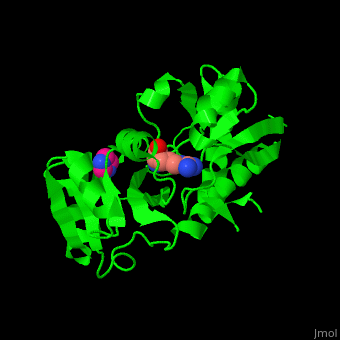ABC transporter
FunctionATP Binding Cassette (ABC) Transporters are ATP-dependent membrane proteins critical for most aspects of cell physiology, including the uptake of nutrients (importers) and elimination of waste products and energy generation (exporters) which are predominantly expressed in excretory organs, such as the liver, intestine, blood-brain barrier, blood-testes barrier, placenta, and kidney[1][2]. There are many ABC Transporters in organisms, for instance, there are 28 in yeast,58 in Caenorhabditis, 51 in Drosophila,129 in Arabadopsis,and the 69 ABC transporters in E. coli account for almost 5% of its genomic coding capacity[3]. ABC transporter protein translocates substrates across membranes. It contains a Solute Binding Domain (SBD). CFTR (Cystic Fibrosis Transmembrane Regulator) translocates chloride and thiocyanate. It contains a nucleotide binding domain (NBD). Mutations in CFTR lead to Cystic Fibrosis. In humans the ABC transporters are classified into subfamilies, i.e. ABCB6 is ABC subfamily B member 6. ABC Transporters have two main functionalities acting either as exporters or importers. ABC Exporters release bound drugs to the extracellular environment, while ABC Importers accept substrate molecules from their relevant substrate-binding proteins[4]. For instance the Vitamin B12 transporter BtuCD (PDB 1l7v) is a binding protein-dependent ABC transporter system that uses the power of ATP hydrolysis to pump vitamin B12 into the cytoplasm of E. coli[5]. For details of sugar transporter see Glut3. Structural highlightsTo achieve export, ABC transporters require a minimum of four domains. Two transmembrane domains (TMDs) form the ligand binding sites and provide specificity, and two NBDs bind and hydrolyze ATP to drive the trans-location of the bound ligand. The NBDs, but not the TMDs, are homologous throughout the family and have several characteristic motifs including the Walker A (GxxGxGKST) and B (ILLDEAT) motifs common to many nucleotide binding proteins and others like the ABC signature, stacking aromatic D, H, and Q loops, which are unique to the family[2].
DiseaseThere are currently 50 known ABC transporters in human. Of these there are 13 genetic diseases known to be associated with 14 of them. Among the diseases are cystic fibrosis, Stargardt disease, age-related macular degeneration and others. ABC Exporters use ATP to drive import and export functions providing multidrug resistance. In eukaryoles, for instance, ABC Transporters are problematic because they export therapeutic drugs such as those used in chemotherapy regimens, which must be changed frequently to avoid the rejection of the drugs[4]. |
| ||||||||||
3D Structures of ABC transporter3D Structures of ABC transporter
Updated on 06-January-2016
ReferencesReferences
- ↑ Cite error: Invalid
<ref>tag; no text was provided for refs namedKidney - ↑ 2.0 2.1 Cite error: Invalid
<ref>tag; no text was provided for refs namedFourDomainsABCT - ↑ Cite error: Invalid
<ref>tag; no text was provided for refs namedEColi - ↑ 4.0 4.1 Cite error: Invalid
<ref>tag; no text was provided for refs namedbiochembook - ↑ Cite error: Invalid
<ref>tag; no text was provided for refs namedBtuCD-Ecoli
